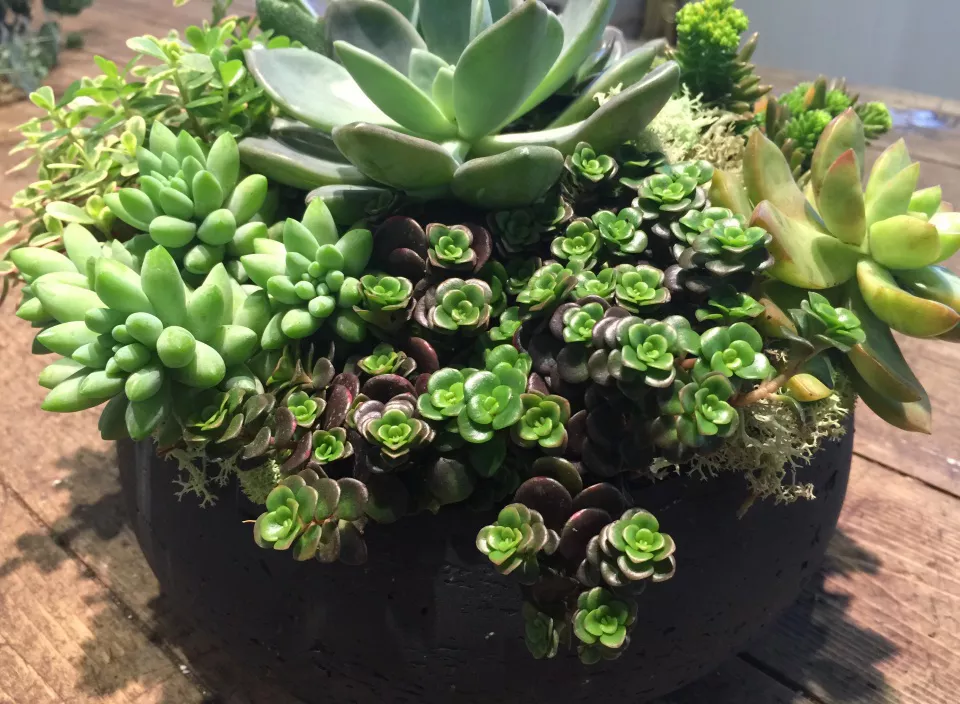Succulents have captured the hearts of plant enthusiasts worldwide with their unique shapes, vibrant colors, and resilience to various growing conditions. Propagating succulents, whether through leaf cuttings, stem cuttings, or offsets, offers an exciting opportunity to expand your collection and share the joy of these charming plants. However, successful propagation requires careful attention to detail, including proper watering techniques. In this article, we explore the art of misting succulent propagations, providing insights into how often to mist for optimal growth and success.
Understanding Succulent Propagation
Succulent propagation involves growing new plants from existing ones, typically using parts of the parent plant such as leaves, stems, or offsets. This process allows enthusiasts to multiply their succulent collection and propagate unique varieties. While succulents are known for their ability to store water in their fleshy leaves and stems, successful propagation requires specific conditions to encourage root development and growth.
The Importance of Moisture in Succulent Propagation
Moisture plays a critical role in succulent propagation, particularly during the initial stages when roots are forming. While succulents are adapted to arid conditions and can tolerate periods of drought, newly propagated cuttings or leaves require adequate moisture to establish roots and begin the growth process. Misting is a common method used to provide moisture to propagating succulents without saturating the soil or causing waterlogged conditions.
Choosing the Right Misting Schedule
Determining how often to mist succulent propagations depends on several factors, including environmental conditions, the stage of propagation, and the moisture requirements of the specific succulent species. While there is no one-size-fits-all approach, certain guidelines can help you develop a suitable misting schedule for your propagations.
Stage of Propagation: During the initial stages of propagation, when roots are forming and establishing, succulent cuttings or leaves require more frequent misting to maintain adequate moisture levels. As roots develop and the plant establishes itself, the frequency of misting can be gradually reduced to prevent overwatering.
Environmental Conditions: Environmental factors such as temperature, humidity levels, and air circulation influence the rate of moisture evaporation and the water needs of succulent propagations. In dry or arid climates, where moisture evaporates quickly, more frequent misting may be necessary to prevent dehydration. Conversely, in humid environments, less frequent misting may be sufficient to maintain adequate moisture levels.
Type of Propagation Medium: The type of propagation medium used can also impact the frequency of misting. Well-draining mediums, such as a mixture of perlite and potting soil or a specialized succulent propagation mix, allow excess moisture to drain away quickly, reducing the risk of overwatering. Conversely, dense or water-retentive mediums may require less frequent misting to prevent waterlogged conditions.
Species and Variety of Succulent: Different succulent species and varieties have varying moisture requirements based on their natural habitats and adaptations. Some succulents, such as Echeverias and Sedums, prefer slightly more moisture during propagation, while others, like Haworthias and Aloe vera, are more drought-tolerant and require less frequent misting. It’s essential to research the specific moisture preferences of the succulent species you are propagating and adjust your misting schedule accordingly.
See Also: How to get rid of succulent gnats?
Signs of Overwatering and Underwatering
Monitoring the moisture levels of succulent propagations is crucial to prevent overwatering or underwatering, both of which can hinder root development and lead to plant stress or rot. Understanding the signs of overwatering and underwatering can help you adjust your misting schedule as needed.
Overwatering: Signs of overwatering in succulent propagations include wilting, yellowing or translucent leaves, mushy or soft stems, and a foul odor emanating from the soil. If you notice any of these signs, reduce the frequency of misting and allow the propagation to dry out slightly between waterings.
Underwatering: Symptoms of underwatering include shriveled or wrinkled leaves, dry and brittle stems, and slow or stunted growth. If your succulent propagations show signs of underwatering, increase the frequency of misting to provide adequate moisture and promote healthy growth.
Monitoring and Adjusting Your Misting Schedule
Regular monitoring of your succulent propagations is essential to assess their moisture needs and adjust your misting schedule accordingly. Pay attention to environmental conditions, such as temperature changes or fluctuations in humidity levels, as these factors can influence the rate of moisture evaporation and impact your watering routine.
Use a spray bottle or mister to apply water directly to the soil around the base of the succulent propagation, avoiding excessive moisture on the leaves or stems. Misting in the morning or early evening allows the water to evaporate gradually and reduces the risk of fungal diseases or rot.
Observe how your succulent propagations respond to misting, noting any changes in growth, appearance, or overall health. Adjust your misting schedule based on the specific needs of each propagation, taking into account factors such as species, environmental conditions, and the stage of growth.
Experiment with different misting frequencies and observe how your succulent propagations respond over time. By fine-tuning your misting schedule and providing the optimal moisture conditions, you can support healthy root development and promote successful growth in your propagating succulents.
Conclusion
Misting is a valuable technique for providing moisture to succulent propagations and promoting healthy root development and growth. By understanding the factors that influence moisture requirements and adopting a proactive approach to monitoring and adjusting your misting schedule, you can support the success of your propagating succulents. Experiment with different misting frequencies, observe how your succulent propagations respond, and fine-tune your watering routine to meet the specific needs of each plant. With proper care and attention, you can enjoy the rewarding experience of propagating succulents and expanding your collection of these captivating plants.


